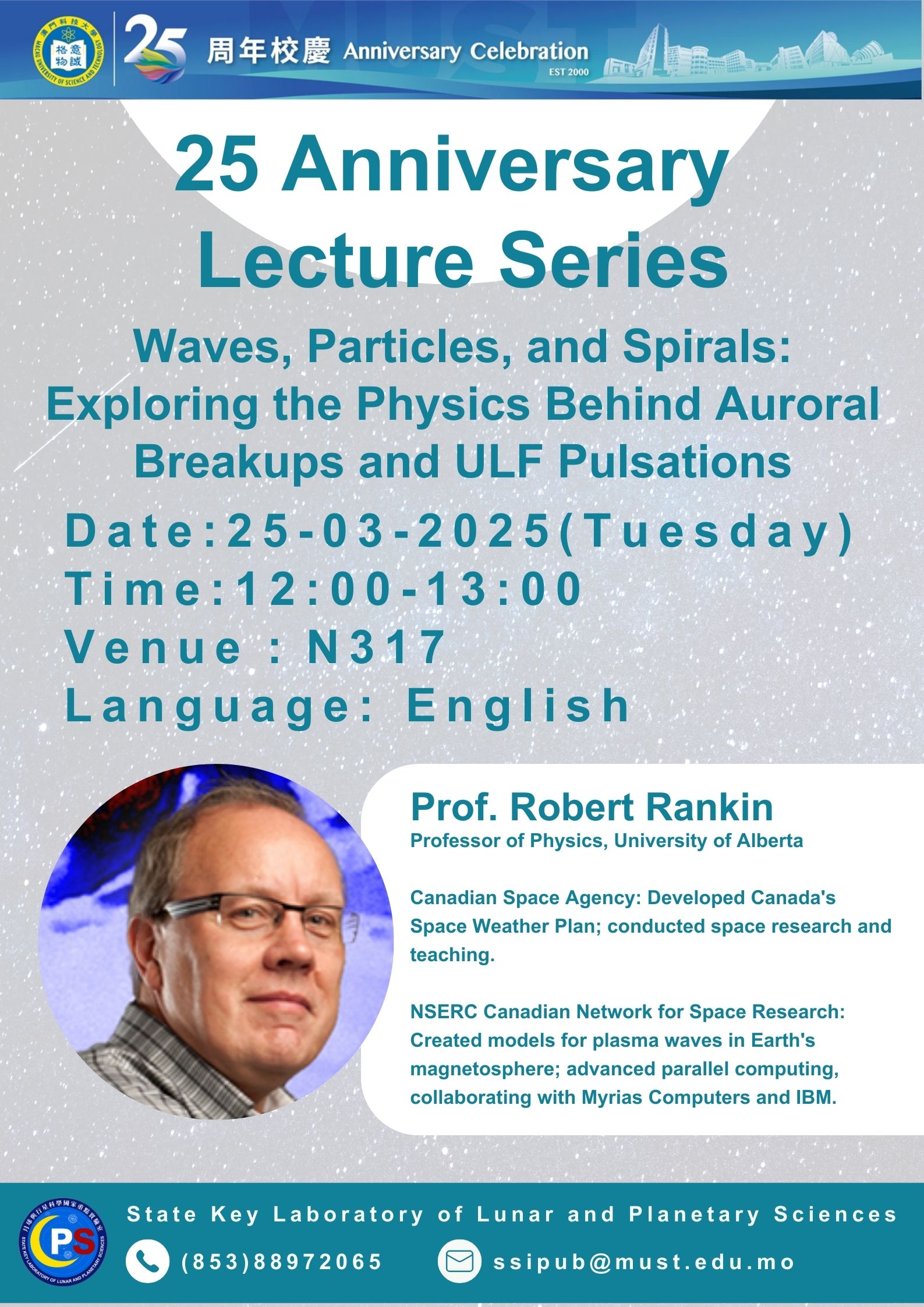25 Anniversary Lecture Series – Ultra-low-frequency waves, energetic particles, and auroral spiral structures: The physical processes behind auroral phenomena

Waves, Particles, and Spirals: Exploring the Physics Behind Auroral Breakups and ULF Pulsations
Robert Rankin, Frances Fenrich, and Ji Liu
Department of Physics, University of Alberta, Edmonton, AB, Canada T6G 2R3.
In Earth's magnetosphere—the region around our planet dominated by Earth's magnetic field and plasma—magnetic field lines can vibrate, creating standing waves known as field line resonances (FLRs). These resonances appear as ultra-low frequency (ULF) waves, which are electromagnetic oscillations occurring at frequencies below roughly 1 Hz. Such waves play an important role in transferring energy between the magnetosphere and Earth's upper atmosphere.
This study investigates how ULF waves influence auroral phenomena. Specifically, we explore their connection to Auroral Beads, which are periodic bright spots that form along existing auroral arcs shortly before these arcs intensify dramatically—a process known as auroral breakup that marks the onset of a substorm. We observe intriguing spiral- and vortex-like structures developing within these auroral beads prior to breakup.
Additionally, we examine how ULF waves relate to a recently discovered optical phenomenon called STEVE (Strong Thermal Emission Velocity Enhancement). STEVE is a distinct sub-auroral emission characterized by a narrow band of whitish-purple light stretching east-west at latitudes slightly lower than typical auroras, usually appearing shortly after substorm onset.
We present a detailed case study where we observed clear auroral beads leading to an auroral breakup event, followed approximately 40 minutes later by a STEVE emission at lower latitudes. Notably, we detected ULF wave modulation in the brightness of STEVE at frequencies between 10–25 millihertz (mHz). We attribute this modulation to a particular type of FLR known as the poloidal mode, which involves oscillations oriented radially outward from Earth and is associated with strong interactions between ULF waves and charged particles.
To carry out this investigation, we used optical imaging data from ground-based instruments (REGO and THEMIS all-sky cameras) and radar measurements from the SuperDARN high-frequency radar network. These observations allowed us to detect and analyze ionospheric signatures of ULF waves modulating auroral emissions. Furthermore, we explored wave-particle interactions by employing computer simulations of particle trajectories (test-particle simulations) alongside satellite measurements from NASA's Van Allen Probes spacecraft, which passed through Earth's inner magnetosphere eastward of the observed auroral event.
Overall, this research enhances our understanding of how Earth's magnetosphere interacts dynamically with the ionosphere, shedding new light on the complex interplay between magnetic waves, charged particles, auroral beads, and STEVE emissions. Insights gained from this study contribute broadly to our knowledge of space weather processes and near-Earth plasma physics.

